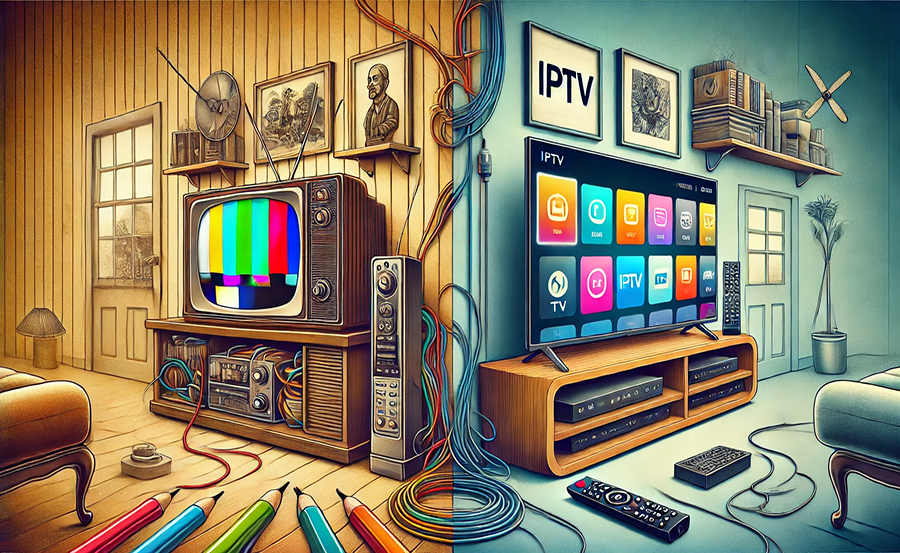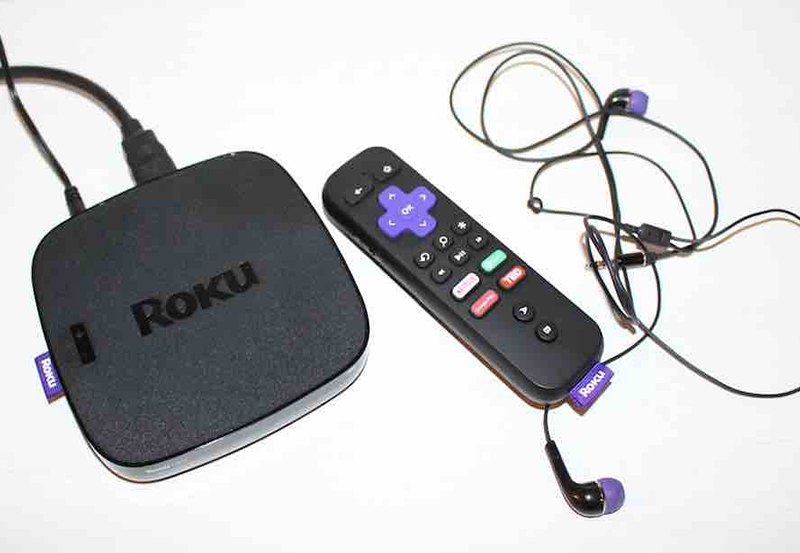IPTV has revolutionized the way we consume media content. It’s an amazing technology that turns your screen into a portal to infinite entertainment. However, like any digital service, it comes with its own set of challenges, especially when you’re diving into using IPTV on a Linux system. This article aims to guide you through the most common IPTV issues you might encounter on Linux and how you can solve them to amplify your IPTV enjoyment effortlessly.
Understanding IPTV and Its Components
Before dipping into troubleshooting, it’s important to understand what IPTV entails and the components involved in setting it up. IPTV, or Internet Protocol Television, is a method of delivering television content over the internet, rather than through traditional terrestrial, satellite, or cable formats. Familiarizing yourself with its components will certainly help tackle issues more efficiently.
What Makes Up an IPTV System?
An IPTV system mainly consists of three parts: an IPTV provider, the middleware, and the end-user device. The IPTV provider broadcasts the channels, the middleware facilitates communication between your system and the provider, and finally, the end-user device brings it all together for your viewing pleasure.
Expert Advice:
Get access to thousands of channels worldwide with XtremeHD IPTV, designed for sports lovers and movie enthusiasts.
This setup allows you to enjoy a myriad of top IPTV subscriptions that offer global channels at your fingertips. Choosing the best IPTV for streaming movies can dramatically enhance your entertainment experience.
Linux and IPTV Compatibility
Linux offers a flexible environment for IPTV streaming, thanks to its open-source nature. Yet, this flexibility brings along its share of configuration puzzles and compatibility issues. Understanding the compatibility between your Linux operating system and your chosen IPTV service can go a long way to preempt potential snags.
Moreover, selecting the right tools and applications will help in achieving a smoother streaming experience on Linux.
Common IPTV Problems on Linux
Despite its advantages, using IPTV on a Linux platform isn’t without hiccups. Below are some of the frequent problems users face and the reasons they occur. These issues can often be fixed with some straightforward troubleshooting steps.
Buffering and Streaming Lag
Buffering issues are a common nuisance for IPTV users, and they can be caused by several factors. Bandwidth limitations, network congestion, and poor server response times contribute to this problem.
Buffering might disrupt your enjoyment, but with some careful tweaking, it doesn’t have to be a persistent issue.
Solutions for Buffering Issues
- Check your internet connection speed and ensure it meets the requirements of your IPTV provider.
- Close unnecessary applications or devices that are hogging your bandwidth.
- Switch to a wired Ethernet connection instead of Wi-Fi to avoid signal interference.
Unsupported File Formats
Linux’s extensive support for file formats is great until you encounter an IPTV service using a format that isn’t supported by your default video player. This can result in unexpected errors when attempting to stream.
In most cases, these errors are due to the lack of necessary codecs on your system.
Fixing File Format Issues
- Install a versatile media player, like VLC, which supports a wide range of codecs.
- Ensure your media player is updated to the latest version to avoid compatibility issues.
Connection Dropouts
Experiencing sudden dropouts while watching IPTV can be frustrating, especially during a crucial scene in your favorite movie. Such issues are often related to network stability or provider-side glitches.
Ensuring a stable connection can prevent these unpleasant interruptions.
Measures to Stabilize Connection
- Reboot your router to clear any temporary faults and refresh your network.
- Contact your IPTV provider to check for any server-side issues.
- Consider using a VPN to bypass network throttling or regional restrictions.
Configuring IPTV on Linux
Setting up IPTV on a Linux system can be a bit daunting if you’re not familiar with the Linux environment. However, with step-by-step guidance, you can turn this challenge into an opportunity to enhance your tech skills.
Finding the Right IPTV Player
Selecting a proper IPTV player is crucial for a seamless streaming experience. Linux offers several applications that can beautifully handle IPTV streams, but not all are created equal. From free options to premium picks, it’s crucial to choose a player that meets your needs.
Recommended IPTV Players for Linux
- VLC Media Player: Known for its comprehensive format support and streaming capabilities.
- Kodi: Offers extensive add-ons and a customizable interface for IPTV viewing.
- Plex: Provides a user-friendly interface and easy media management features.
Installing and Configuring Your Player
After selecting your player, the next step involves installation and configuration. While Linux doesn’t always offer the plug-and-play convenience of other operating systems, its comprehensive command line capabilities provide control and flexibility.
The installation process can vary slightly depending on your Linux distribution, but basic terminal commands are usually effective across the board.
Basic Player Installation Steps
- Open your terminal and update your package list using the command:
sudo apt-get update. - Install your chosen player (e.g., VLC) with:
sudo apt-get install vlc. - Configure your player settings to optimize buffering and playback quality according to your internet speed.
Enhancing Your IPTV Experience
Resolving troubleshooting issues is just the start. There are numerous ways to enhance your IPTV experience on Linux, transforming it from simply functional to truly extraordinary.
Improving Picture Quality
Picture quality can significantly affect how enjoyable your IPTV experience is. Higher resolutions demand greater bandwidth, so finding a balance between quality and performance is key.
Some action steps can dramatically boost your picture quality, making your streaming sessions even more captivating.
Strategies for Better Quality
- Configure your player settings to prioritize high-definition streams.
- Use a monitor or TV that supports high resolutions and improved color settings.
- Consider updating your graphics drivers for optimal display performance.
Discovering Additional Content
While solving technical issues ensures smoother streaming, accessing more content can further enhance your enjoyment. Expanding your channel selections or integrating service features can be game-changers.
Engaging with various IPTV service offerings can lead to discovering more diverse and fascinating content.
Expanding Your Content Library
- Explore subscription options to include premium channels or exclusive content in your package.
- Integrate IPTV services with social media platforms to discover trending shows and movies.
Using the Right Hardware
Your hardware setups—ranging from cables to routers—play a significant role in your IPTV experience. Minor upgrades or tweaks can noticeably enhance performance.
Whether it’s investing in a better router or optimizing your current setup, the hardware can make or break your experience.
Hardware Tips for IPTV
- Use a high-quality HDMI cable for clear, uninterrupted signal transmission.
- Upgrade to a dual-band router to handle multiple devices and broader bandwidth demands.
- Ensure your device’s specifications meet the recommended requirements of your IPTV software.
An Unscripted Finale
Décor, curation, or merely kicking back, troubleshooting IPTV issues might be a journey you weren’t eager to embark on. Yet, tackling these challenges brings rewarding outcomes and an enriched viewing experience. From buffering grudges to transforming your settings like a seasoned pro, remember it’s all about the fluidity of your own media journey, steered by your hands.
Frequently Asked Questions

Why does my IPTV often buffer despite a good internet connection?
Despite having ample bandwidth, buffering could be due to server-side problems, incorrect player settings, or local network congestion. Ensuring all components are functioning optimally can alleviate this issue.
What are the essential factors for choosing an IPTV provider?
Consider the channel selection, streaming quality, customer service, and compatibility with Linux-based players. Doing thorough research and reading reviews can help in selecting the top IPTV subscriptions.
Are there specific Linux distributions better suited for IPTV streaming?
While IPTV can run on most Linux distributions, some users prefer Ubuntu or Mint due to their user-friendly interfaces and extensive support communities, enhancing the ease of setup and troubleshooting.
How can I resolve unsupported file format issues on Linux?
Install players known for versatile codec support, like VLC, or manually add the required codecs. Regularly updating your software can also prevent compatibility issues with new file formats.
Can I use multiple IPTV services on Linux simultaneously?
Yes, you can subscribe to multiple IPTV services, taking care to manage each service’s application carefully to avoid conflicts. This approach can broaden your content availability and experience.
The Ultimate IPTV Troubleshooting Guide: Fix Common Issues Fast





